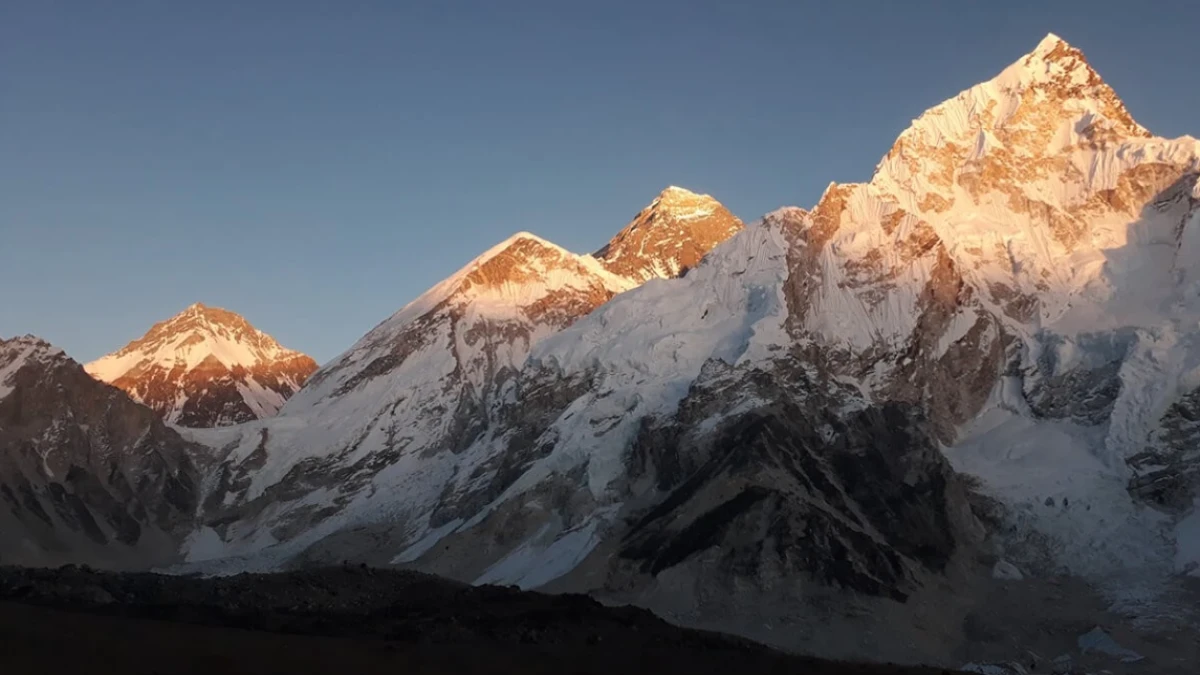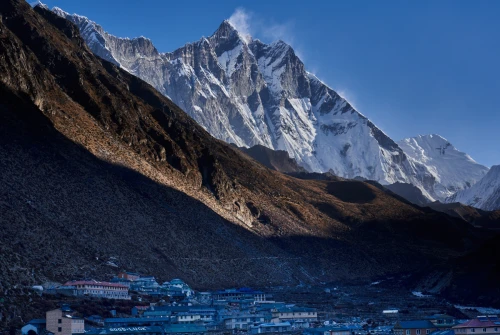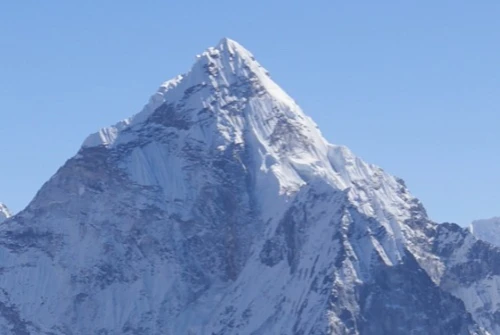Overview
The Everest Base Camp Trekking for Seniors is a thoughtfully designed adventure crafted especially for mature explorers, baby boomers, active retirees, and 50+ adventure travelers who dream of standing at the foot of the world’s highest peak but prefer a relaxed, safe, and sustainable pace. Unlike standard itineraries that rush through the Khumbu Valley, this senior-friendly Everest trekking package allows ample time for gentle acclimatization, cultural immersion, and mindful walking, ensuring both safety and comfort without compromising the thrill of the Himalayas.
This is more than just a trek; it’s an opportunity to walk slowly in the Himalayas, savor each moment, and connect deeply with the Sherpa lifestyle. Daily hiking hours are intentionally shorter (4–6 hours), with two full acclimatization days built in. Our highly experienced guides and porters specialize in supporting older trekkers, senior citizens, and first-time high-altitude walkers, making sure every step is confident and enjoyable. Whether you’re in your 50s, 60s, or 70s, with the right preparation and our Everest for Seniors itinerary, this journey is absolutely within your reach.
Along the way, you’ll experience low-altitude forest walks, iconic suspension bridges, villages with Sherpa tea houses, and panoramic views of legendary peaks like Ama Dablam, Lhotse, and Everest itself. The highlights include standing at Everest Base Camp (5,364m) and climbing Kala Patthar (5,545m) , a gentle but rewarding peak that offers the world’s most iconic view of Mount Everest.
What makes this trek unique is the “slow trekking” approach for seniors: fewer steep ascents, extra rest stops, and the option for lightweight trekking with porter support. This allows you to fully enjoy the grandeur of the Himalayas without rushing, fatigue, or pressure.
For seniors who have always carried the dream of Everest in their hearts, this program is the safest and most fulfilling way to make it come true. With All Nepal Hiking’s experienced team, comfortable accommodations, oxygen support on request, and flexible pacing, your Everest senior adventure will be filled with joy, confidence, and unforgettable memories.
Highlights of the Everest Base Camp Trek for Seniors
The Everest Base Camp Trek 16 Days (Senior-Friendly) is packed with experiences that combine natural beauty, cultural immersion, and personal achievement. Here are the main highlights that make this trek truly unforgettable:
Spectacular Himalayan Views – Enjoy panoramic views of Mount Everest (8,848m), Lhotse, Nuptse, Ama Dablam, and other iconic peaks from Kala Patthar and along the trail. Every day offers breathtaking scenery perfect for photography and reflection.
Everest Base Camp Experience – Standing at 5,364 meters, you’ll experience the legendary Khumbu Icefall and the iconic Everest Base Camp, fulfilling a lifelong dream for many senior trekkers.
Kala Patthar Sunrise Hike – Witness the most stunning sunrise over Everest, a moment that seniors often describe as the highlight of their life.
Cultural Immersion in Sherpa Villages – Walk through Namche Bazaar, Tengboche, Dingboche, and other Sherpa settlements. Visit ancient monasteries, interact with locals, and learn about their unique Himalayan culture and traditions.
Acclimatization Days for Comfort and Safety – Extra days in Namche Bazaar and Dingboche give seniors the chance to adjust to altitude while exploring local sights, making the trek safer and more enjoyable.
Comfortable Teahouse Accommodations – Enjoy warm meals, cozy rooms, and friendly hospitality in the Khumbu region, tailored for seniors seeking comfort without compromising authenticity.
Gentle Pace and Personal Support – With professional guides, porters, and a senior-focused itinerary, the trek allows you to move at your own pace and focus on the journey rather than logistics or heavy loads.
Lush Rhododendron Forests and Suspension Bridges – Walk through beautiful forests, cross iconic suspension bridges, and enjoy the serene natural beauty of the Sagarmatha National Park, all at a pace that’s senior-friendly.
This combination of majestic mountains, cultural experiences, and careful pacing ensures seniors don’t just reach Everest Base Camp—they live and savor every step of the journey.
Why This Trek is Specially Focused on Seniors and How It Helps Them
The Everest Base Camp trek is a lifelong dream for many, but the standard itineraries often overlook the needs of senior trekkers. That’s where this 16-day senior-focused Everest Base Camp itinerary makes all the difference. It’s carefully designed to give you more time to acclimatize, shorter daily walking distances, and extra rest days. This slower pace significantly reduces the risk of altitude sickness and allows you to enjoy the journey without feeling pressured or rushed.
For seniors, the trek is not just about reaching Base Camp; it’s about confidence, safety, and comfort. Walking at a relaxed pace gives your body the space to adjust naturally to high altitude, while the inclusion of acclimatization days in Namche Bazaar and Dingboche ensures a much smoother experience. Even the trail itself is paced thoughtfully; trekking hours are capped at around 4 to 6 hours a day, with breaks to rest, hydrate, and admire the breathtaking mountain views.
Another key element of this trek for seniors is the professional support system. Having experienced guides who understand your pace and porters to carry the heavier loads means you can focus purely on the experience, not the struggle. The lodges selected along the way provide the right mix of comfort and authenticity, with warm meals and cozy resting spots. Altogether, this trek is built to support seniors physically and mentally, turning a challenge into an enjoyable and achievable journey.
Who Is This Trek For?
The 16-day Everest Base Camp Trekking for Seniors is for those who have always dreamed of seeing Mount Everest up close but want to do it in a way that’s comfortable, well-paced, and realistic for their age group. It is ideal for adventurers in their 50s, 60s, and even 70s who maintain reasonable fitness and enjoy walking or hiking but prefer not to rush through challenging trails.
This trek is also perfect for first-time trekkers in Nepal who may feel uncertain about whether they can handle high-altitude trekking. The senior-focused itinerary removes that pressure by giving you extra acclimatization, shorter trekking days, and expert guidance. If you value safety and comfort as much as adventure, this program is designed exactly for you.
It’s also a great choice for travelers seeking a mindful journey rather than a physically demanding expedition. If your goal is to immerse yourself in Sherpa culture, enjoy the beauty of the Khumbu Valley, and take each step without stress, this trek provides the ideal balance. Even if you’ve never done a multi-day trek before, this well-paced itinerary makes Everest Base Camp an achievable dream.
Best Way to Book Without Much Hassle
Planning a trek to Everest Base Camp can sometimes feel overwhelming, finding the right itinerary, arranging flights, permits, guides, and accommodations. For seniors, the last thing you want is the stress of managing countless details. That’s why the best way to book your senior-friendly Everest Base Camp Trek is through a trusted local operator like All Nepal Hiking. We handle everything for you so you can focus on enjoying the journey, not the logistics.
From the moment you land in Kathmandu, we take care of all essentials, airport transfers, hotel bookings, domestic flights, trekking permits, experienced guides, and porters. During the trek, your guide ensures the pace suits your comfort, arranges your accommodations, and makes sure every meal and rest stop is smooth and stress-free. Our porters carry your main bags, leaving you free to trek with only a light daypack. This makes the trek much easier, especially for seniors who want a hassle-free experience.
Booking with All Nepal Hiking also means you’re not just buying a trek, you’re getting a complete support system. We understand the unique needs of senior travelers: extra care, more time for acclimatization, and flexibility if adjustments are needed. With us, you don’t have to worry about “what ifs”; our team is there to make sure your Everest journey is safe, comfortable, and filled with lifelong memories. All you need to do is book your dates, prepare yourself, and let us handle the rest.


 based on 9 reviews
based on 9 reviews
